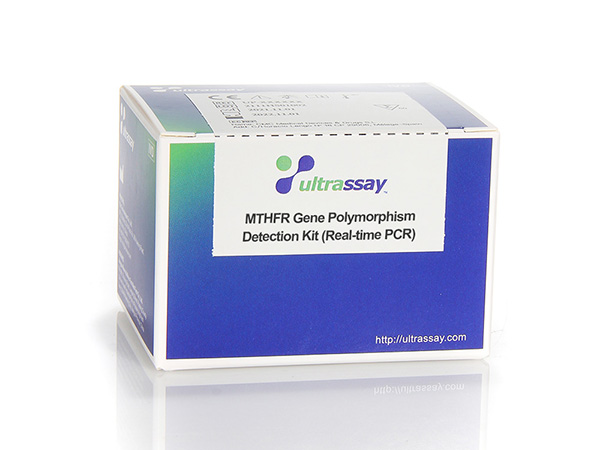5’10-Methylenetetrahydrofolate reductase (MTHFR) is a key enzyme in the methionine-folate metabolism system, involved in maintaining the normal metabolism of folic acid and maintaining normal homocysteine levels in the body. The polymorphism of the c.677 site of the MTHFR gene can lead to a decrease in the activity of the key enzyme encoding folic acid metabolism, leading to folic acid metabolism disorder, resulting in decreased folic acid level and hyperhomocysteinemia. For people with MTHFR gene abnormality, the enzyme activity is significantly reduced, resulting in folic acid metabolism disorder, “one-carbon group” metabolism abnormality, resulting in a significantly increased risk of Down syndrome, neonatal neural tube defects and other diseases, such people need supplementation More folic acid is needed to achieve the desired effect. The distribution frequency of the c.677 (C/T) site of the MTHFR gene in the Chinese population is shown in the table below.
| Gene |
Site |
Genotype |
The proportion of genotypes in the Chinese population |
| MTHFR |
c.677 |
CC;CT;TT
Normal Normal Risk |
29.1%;48.5%;22.3% |
The test results of this kit are only for clinicians to provide reference for homocysteine metabolism. It is suitable for clinical auxiliary diagnosis, and should be judged based on the actual situation of the case, rather than the only standard for clinical diagnosis.
UltraDx MTHFR Gene Polymorphism Detection Kit uses ARMS-qPCR technology to design wild-type and mutant ARMS primers for the c.677 site of the human MTHFR gene, and combine with Taqman probes to detect specific amplification products. When the base is completely complementary to the corresponding allelic template, the PCR amplification reaction can be carried out normally to obtain specific products and generate fluorescent signals. The loci to be tested were judged by the fluorescence signal results of the wild/mutant lines, and the relative Ct value was used to judge the genotype.
The internal standard in the kit uses housekeeping gene primers combined with specific probes to monitor the detection process in a fully closed reaction system, which can effectively monitor the occurrence of false negatives. In order to avoid the mutual influence between the fluorescent signals, the polymorphism detection and housekeeping gene use fluorophores with different emission wavelengths respectively. Among them, the MTHFR gene c.677 site polymorphism detection uses the FAM fluorophore; the housekeeping gene uses the CY5 fluorophore group.
Applicable sample type: EDTA whole blood.
Applied Biosystems™ Real time PCR system 7500, ABI QuantStudio™5 Real-time PCR system, LightCycler® 480 PCR system, Bio-Rad CFX96 real-time PCR instrument. Ultrassay eQ9600 Real Time qPCR System etc.



